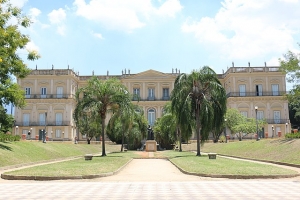The book, International Conflict and Security Law: A Research Handbook, brings together various writings on an ever-evolving area of the law, International Conflict and Security Law. This field of law is relatively broad and this extensive research handbook of almost 1500 pages is justifiably lengthy and rich. Contributors from numerous countries across the world provide an in-depth understanding of International Conflict and Security Law. This review focus specifically on five chapters falling within the purview of the reviewer’s field of expertise and some developing areas, including International Criminal Law, Transitional Justice, Anti-Corruption Law and children’s rights. These fields have to be addressed critically in the context of International Conflict and Security Law to ensure peace and stability worldwide. The reviewer analyses critically the content and arguments of each chapter and how it can contribute to better understanding the field of International Conflict and Security Law through effective collaboration.
First, Sergey Sayapin (Chapter 22), who is also one of the editors of the book, provides a detailed overview of Transnational and International Criminal Law. International Criminal Law is not usually grouped together with Transnational Law but this works perfectly in the context of International Conflict and Security Law and its cross-border nature, on which Transnational Law focuses. Whereas International Criminal Law focuses on the prosecution of atrocities such as genocide, crimes against humanity, war crimes and aggression, Transnational Criminal Law includes crimes such as human trafiicking, arms trafficking, money laundering and others, which do not receive the same attention as the former.This chapter identifies the importance of the involvement and cooperation between states to combat international crimes. Aspects of jurisdiction is discussed in detail and provides the reader with an overview of how transnational crimes and the core crimes of the Rome Statute are committed. A thorough analysis of International Criminal Procedure identifies the procedural challenges that domestic and international tribunals, including the International Criminal Court (ICC), face when prosecuting individuals who commit these crimes. The chapter also illustrates that COVID-19 exposed various loopholes in the international and domestic justice systems, however, there are several best learned practices such as the use of technology in trials that should be further explored. It criticises the absence of Islamic Law in the Rome Statute, a critique lacking in other contributions in this area.
Next, Thomas Kruessmann (Chapter 23) provides a discussion of International Anti-Corruption Law. It importantly explains that corruption is one of the root causes of International Conflict and Security Law. It details how grand corruption cripples states and inevitably leads to conflict. A historical analysis precedes a detailed discussion of the role of the United Nations Convention Against Corruption. Domestic anti-corruption regimes are also examined, and national case law provides a glimpse into the corrupt practices of companies. The chapter proposes the establishment of an International Anti-Corruption Court but also provides reasons why it would be difficult to establish such a court. The importance of state cooperation is also mentioned throughout the chapter since a single corrupt act may be committed across various borders. The protection of whistleblowers is further analysed and the author challenges domestic and international role players to increase their protection. The inclusion of this chapter is refreshing as it is seldom a chapter that you would find in a book of this nature and scope. Indeed, economic crimes play are a major role in international conflict and the prevention of corruption therefore becomes paramount.
In Chapter 39, Tara Smith provides an analysis of climate change and armed conflict. This chapter should be read in conjunction with chapter 20, also written by Smith, which focuses on the protection of the environment and natural resources during armed conflict. The nexus between climate change and armed conflict has only recently received much-needed scholarly attention. The chapter reminds the reader often that the relationship between climate change and armed conflict, although not new, is a complex relationship, routinely challenged by academics. Apart from analysing what climate change is and how it is regulated, the author also explores the relationship between the core crimes of the Rome Statute and climate change. The author examines the importance of geoengineering technology and warns how this can be used as a weapon by states in the future. The chapter furthermore provides several ways how climate change can lead to armed conflict but explains that these causes require further research. It calls for a more nuanced take on how climate change can cause armed conflict. This work is praiseworthy in that in provides a look into the unknown, a future marred by an increasingly toxic climate and questions about how societies will respond to these challenges.
Chapter 48 deals with the crime of apartheid. Gerhard Kemp analyses the crime by looking at its abhorrent history and development over the years. The chapter importantly points out that apartheid is a crime beyond the scope of transitional justice and explains how it has been recognised as an international crime and included in the Rome Statute as a crime against humanity. The author provides that the crime has not been prosecuted as a crime against humanity yet. The recent 2022 developments in South Africa where the National Prosecuting Authority has charged a former apartheid criminal with committing apartheid as a crime against humanity is therefore inspiring. The chapter criticises the late South African President, F.W. de Klerk’s comments that apartheid was not a crime as a major disappointment in South Africa’s struggle against apartheid. The author’s criticisms of the Truth and Reconciliation Commission is also valid in understanding the negotiated justice dilemma faced by the country at the time. South Africa, more than 30 years since the release of Nelson Mandela, has yet to see a large-scale prosecution of former apartheid criminals, and this situation may unfortunately not change. This is an important chapter as apartheid is a crime that can cause international conflict and insecurity wherever it is committed. Its eradication, if possible, is not negotiable.
Finally, chapter 63 deals with a specific part of international and domestic law, namely, the obligations of the Holy See as a party to human rights treaties. The chapter entitled ‘The Children vs the Church: Human Rights and the Holy See in the Sex Abuse Crisis’ is an important contribution to the field of International Conflict and Security Law. In international conflict, children are primarily viewed as victims of war, either as refugees or child soldiers. This view of children outside as victims outside the parameters of the archetypal war environment is a valuable contribution. Nicolas Zambrana-Tevar explains that as the supreme governing body of the Catholic Church, the Holy See has a duty to prevent and expose child sexual abuse by Catholic priests throughout the world. This has, unfortunately, not been the case since the Holy See does not have the same structure and coercive power as sovereign states. It remains an international religious non-state actor. The reluctance of the Holy See to be more proactive and take responsibility for the sexual abuse crisis was even brought before the ICC, although the ICC stated that there was no basis to proceed with an investigation. This highlights the importance of the matter internationally. The chapter also explains the Holy See’s involvement at the Convention on the Rights of the Child and various other Conventions. It posits that the Holy See has always regarded itself as a moral beacon and a super diplomat. The author further analyses how vague the Holy See’s responses have been towards the sexual abuse crisis. This vagueness is unacceptable and the chapter rightfully challenges the Holy See’s self-proclaimed limitless powers over Catholic entities worldwide.
These chapters all share one common idea: the need for collaboration. It is important for states to collaborate with each other to combat international conflict and to make countries safer. The need for effective regional and international collaborative efforts are essential for International Criminal Law, Anti-Corruption Law, children’s rights and environmental law to combat conflict and insecurity.
I wholeheartedly recommend the book to practitioners, civil society, academics and other related parties. It will make a significant impact on the field of International Criminal Law and Transnational Law by emphasising the importance of collaboration between states. Also, it calls for further research in the fields of Islamic Law, environmental law and the sexual abuse of children’s rights, especially that of boys, which all require much needed scholarly attention under International Criminal Law.
-

Windell Nortje is a senior lecturer at the Law Faculty of the University of the Western Cape in Cape Town, South Africa and conducts research in the field of criminal procedure and International Criminal Law.





